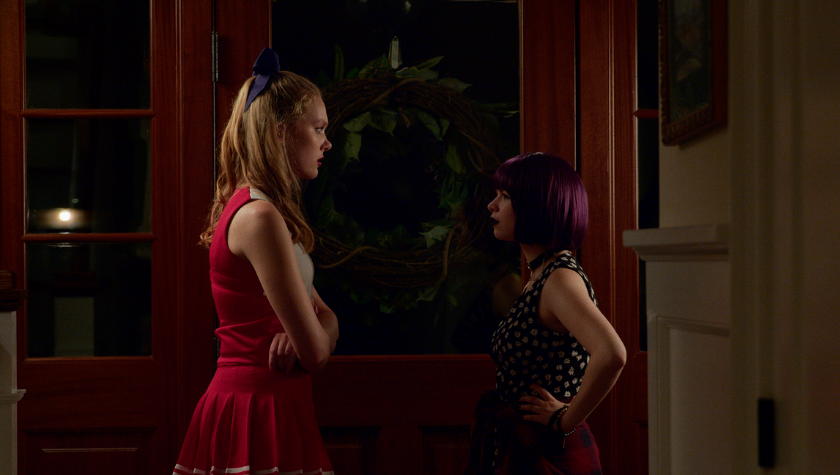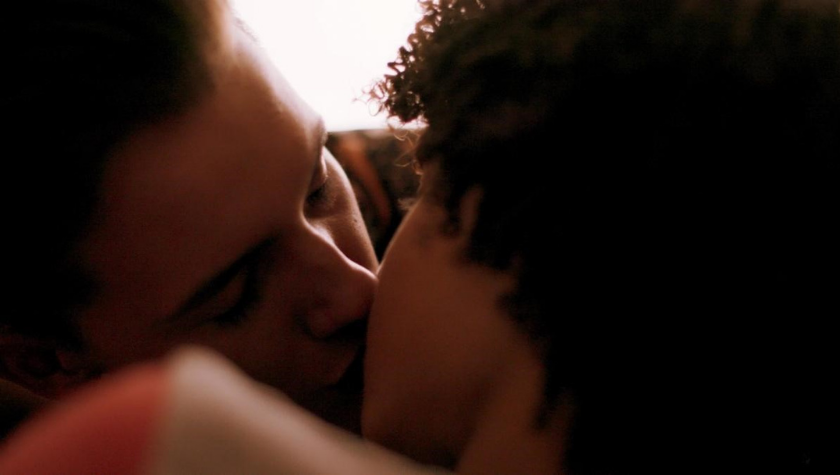Port Authority' writer and director Danielle Lessovitz on representation of Kiki Ballroom
June 5, 2021
Paul (Fionn Whitehead) finds himself in the middle of New York City after being kicked out of his home in Pennsylvania. Amidst the chaos and clamor of his new environment, he stumbles across Wye (Leyna Bloom), pronounced like the question. Wye, a trans woman of color active in kiki ballroom, introduces him to a world outside of his own, which he slowly attaches to. Port Authority is a coming-of-age film that shares the love story of Paul and Wye, two strangers whose lives continually intertwine as they get closer to each other.
Writer-director Danielle Lessovitz approached the film with sensitivity and dedication to depict the kiki ballroom scene and queer family. Behind the love story of Wye and Paul is a community full of love. These themes are what built the film and depicted an honest look at the characters' lives. It began with family.
The screenplay’s origin story derives from Lessovitz’s relationship with her father. After his death, she turned to kiki balls to express herself.
“During that grieving process, I went to a kiki ball and it was a very transcendent and spiritually powerful experience for me,” she said.
“Especially to understand this idea of chosen family and knowing that you have the power to decide who you want to be your family and how you want to express yourself.”
Coming into a community full of queer people of color as a queer, white woman offered her a new perspective and steered her development of Paul’s character.
“I realized that I'm not someone who would normally naturally be in this community,” Lessovitz said.
“So what does that look like in terms of a story? Although I don't relate necessarily to Paul’s behaviors, I wanted to expose them.”
She had the idea for Port Authority for about a year before sitting down to write it. Within two weeks of continuous writing, she pushed out a first draft that would be a base layer of what it would become. What followed was a series of writing and rewriting, research and workshops.
“Then came the beginning of an exploration; a lot of research, a lot of going into the kiki ballroom culture, meeting a lot of trans women of color, kind of doing that sort of living and being exposed to and being open to the lived experience of others that then sort of found its way into this script,” she said.
Lessovitz wanted to make sure that voices of the community were at the forefront of the script to honestly represent their experiences. Even after casting, input from the cast helped shape each individual character.
“In terms of who I wanted to cast, I would then build the characters for them based on their life and what they were telling me,” she said.
“So it became this back and forth between ideas, and then just the reality of the world and pulling out something that felt grounded in the truth of the lived experience.”
The actors helped describe how their characters behaved, what they cared about and who they are as people. Lessovitz even brought the script to the community to ensure the stories of the characters were authentic.
“The first thing we did is we went to the, the founder of the kiki ballroom scene just because the piece takes place in the kiki ballroom scene,” Lessovitz said.
“We showed her the script and we said, ‘Does this feel real to you?’ And she was like, ‘Yes, I feel like I've seen these stories all the time.’”
Through various workshops, Lessovitz also brought the script to about 30 members of the kiki ballroom community to bounce around ideas and hear about their own stories being part of the community. She wanted to make sure there were people who could represent the experiences of queer people of color and the kiki ballroom scene in front of the camera, behind the camera, and in the script.
The input is what shaped the beautifully innocent, romantic scenes between the characters; whether it be a playful conversation or a terse statement on the part of Paul.
"The important thing for me was to show that Wye was actually incredibly transparent in the process, and it's Paul who is the duplicitous one who's performing a sort of a facade of toughness, of masculinity, and feeling a sense of belonging; who in the end, doesn't have any of those."
Out of their dichotomy comes moments of innocence that contrast with the world they live in. Through their connection to each other and their growing chosen family, they gain a better understanding of who they are and what they stand for. This is particularly impactful for Paul, who gets a crash course on chosen family.
“I want us to really think about what family means and how genetic families might not always serve us in a way that we need to be served,” Lessovitz said.
Chosen family plays a large part in the film, and through the depiction, Lessovitz wanted to have the audience question who makes up their own family, whether it be our parents or siblings. What do we value in those roles?
“Being able to honor and to feel like we can honor those people who serve those roles in our life, but who aren't born to us,” she explained.
“And I think if we allow ourselves to have those relationships, we'll be able to put ourselves in situations that are less toxic.”
The heart of the film rests in the representation of a community often overlooked, building on themes of love and family. Lessovitz’s dedication to crafting a story that authentically depicts the kiki ballroom community shapes Port Authority as a heartfelt coming-of-age film of two worlds colliding in New York City. She hopes that the film provides an homage to the community on and offscreen, depicting the beauty and energy of the people who make it shine.
“Because I know that a lot of them have felt overlooked in a way, and I really just want them to kind of break out and to become a large presence in the world and in culture, and to really guide the next generation in a way that just brings more power,” Lessovitz said.
Port Authority is available in select theaters, On Demand and Digital.
Written by: Steven Vargas
Steven Vargas is a multimedia journalist based in Los Angeles whose work focuses on arts, entertainment and activism. He is a current grad student at USC Annenberg pursuing an MA in Specialized Journalism (The Arts) and previously graduated from USC with a BA in Theatre and Journalism with a minor in Dance. He is a current member of the Equity Board, a new initiative at Annenberg Media dedicated to diversifying sourcing and promoting inclusive coverage across the publication. His short doc, “Dancing at Home,” earned first place in the LA Press Club’s “Life in the Time of the Coronavirus Contest" in May 2020. More recently, he co-directed "Two Paths: One Direction," an award-winning short documentary produced with students from the USC and Prairie View A&M University about their experiences of 2020. He produced work for ET Live, TheWrap, Dance Magazine, BuzzFeed News, and more. His work can be found here: https://www.vargassteven.com/



